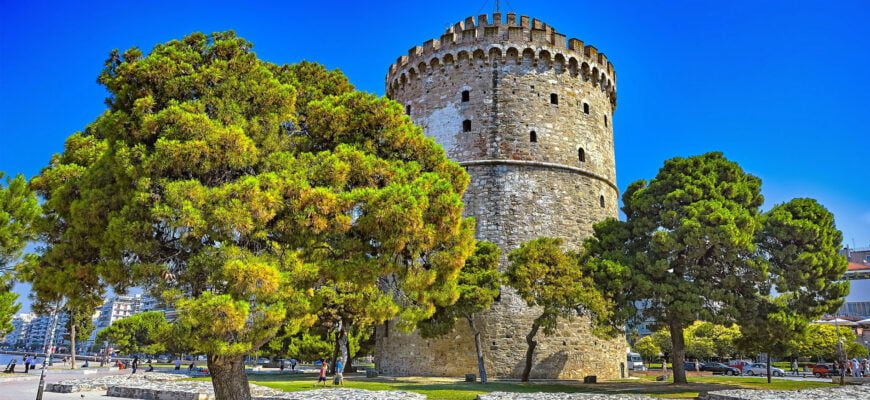Looking for an interesting place to spend your vacation? Want to combine a beach holiday with memorable excursions? Then consider the cradle of Greek culture, the museum city of Thessaloniki. It’s no wonder that this city is recognized as the second most significant and tourist-friendly city after Athens. It only loses to Athens in size and population.
Today, we will discuss the most striking attractions of Thessaloniki and take a small walk through historical and cultural sites that still remember the discoveries of brilliant Greeks, bloody battles with Roman legions, and the destructive raids of Ottoman warriors.
White Tower
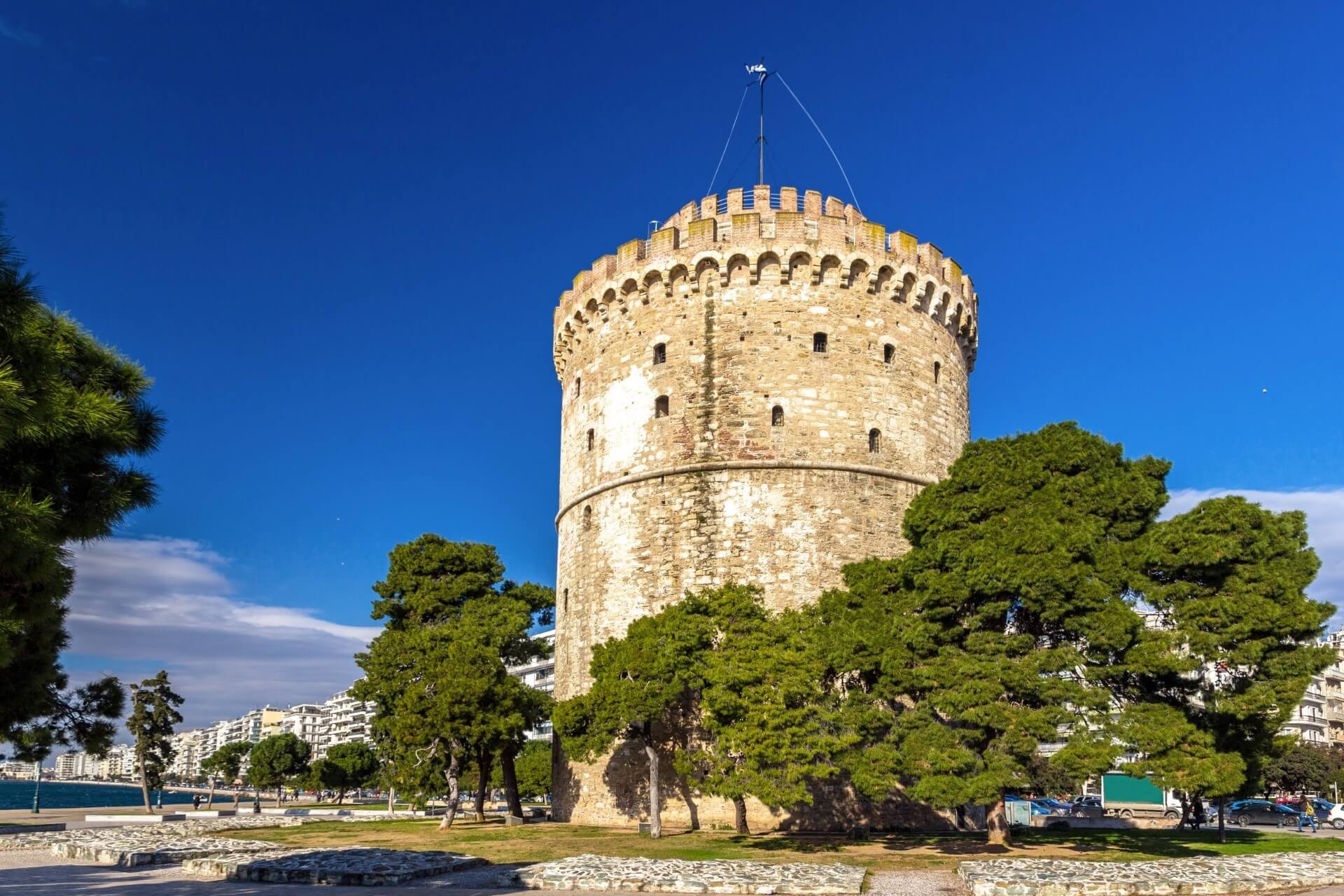
One of the most famous and striking landmarks of the Greek city is the White Tower. Located in the waterfront area, it is also known as the Blood Tower due to the execution of several hundred people there. The tower was built by the Turks as part of the city’s defensive wall, and later it housed prisoners awaiting court sentences.
Today, the tower is not only a prominent landmark but also holds museum status. Visitors can explore its secret corners, corridors, and staircases, as well as enjoy aromatic Greek cuisine served at the local café on the observation deck.
The collection in the tower mainly consists of Byzantine-era artifacts. Currently, visiting the tower is free of charge. To reach this landmark from any point in the city, simply tell the taxi driver the address: End Nikis Av, GR 54621.
Aristotelous Square

One of the most popular places for both tourists and locals is Aristotelous Square. This landmark was designed by architect Ernest Hébrard in 1917 as part of the city’s restoration after a catastrophic fire. Today, the square is home to numerous cafes and restaurants where visitors love to spend their time.
In addition, architecture enthusiasts can admire the artistic works from various historical periods and architectural styles. Almost every meter of the square is decorated with carved balconies, arches, and other decorative elements. A particular point of interest is a flower bed shaped like a clock showing the actual time.
The square is adorned with a huge statue of Aristotle. Many tourists rush to photograph themselves with the ancient philosopher and touch the left toe of his foot. According to local belief, this simple action is said to make you smarter. It’s no surprise that the toe is polished to a shine. The square is located at Platia Aristotelous 2-8, Thessaloniki.
Basilica of Saint Demetrius
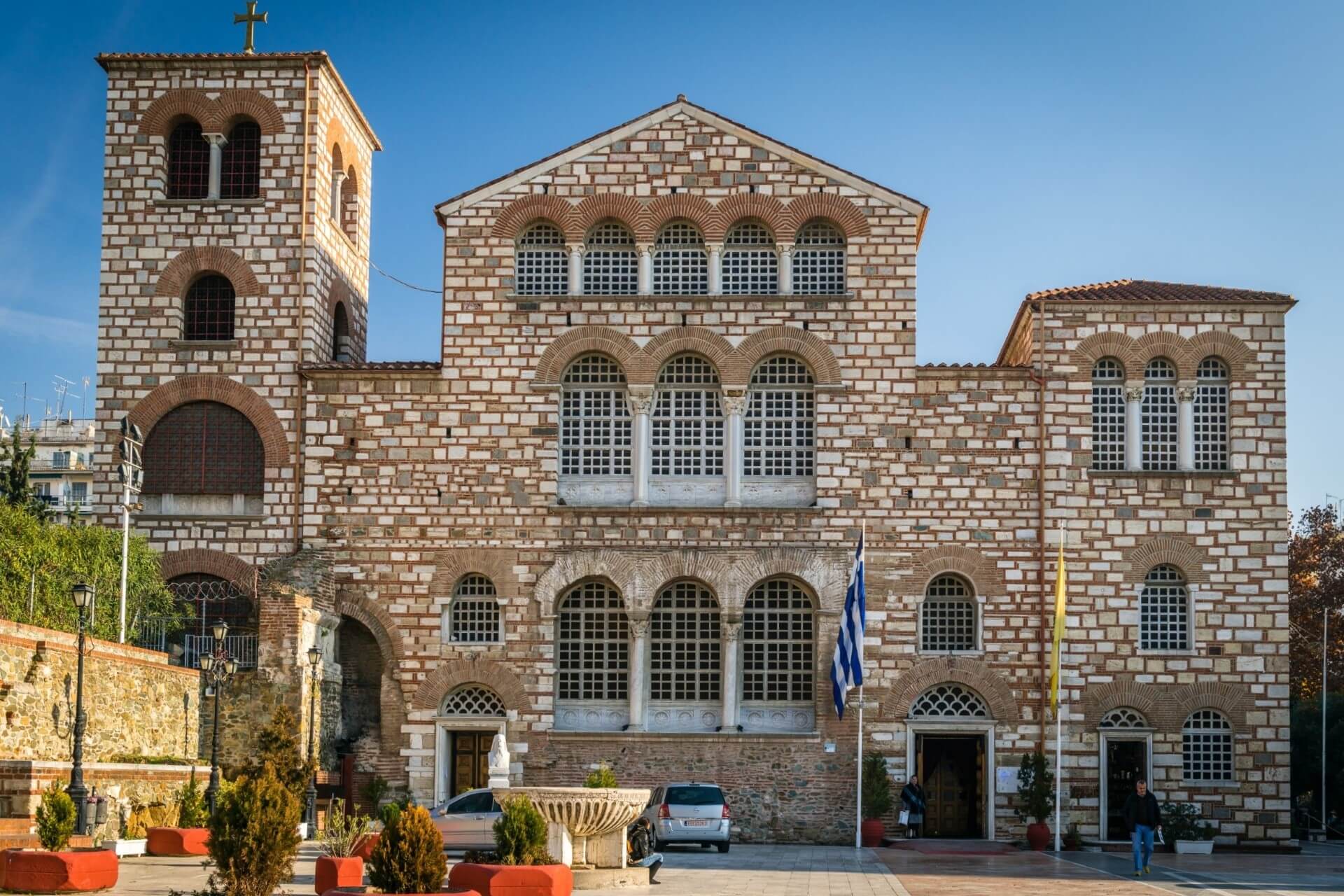
Moving on, the next attraction we highly recommend including in your itinerary is the Cathedral dedicated to Saint Demetrius, the patron saint of Thessaloniki. According to history, Demetrius of Thessaloniki was an ancient ruler of the city who died a martyr’s death in the first century for defending his Christian beliefs. Four centuries later, a temple was built in his honor, housing his remains and those of another saint, Anysia of Thessaloniki.
Tourists will not see the temple in its original form, as it was almost completely destroyed by fire in 1917. Restoration work continued from 1926 to 1948, successfully restoring the frescoes and inscriptions on the walls. Some supports and internal decorative elements remained almost intact, requiring only superficial restoration.
Since then, the temple has been used for its original purpose, with regular services held. In the late 20th century, it was included in the UNESCO World Heritage list. Entrance is free for both tourists and believers. Visitors are welcome at Agiou Nikolaou 2-10.
Arch and Tomb of Galerius
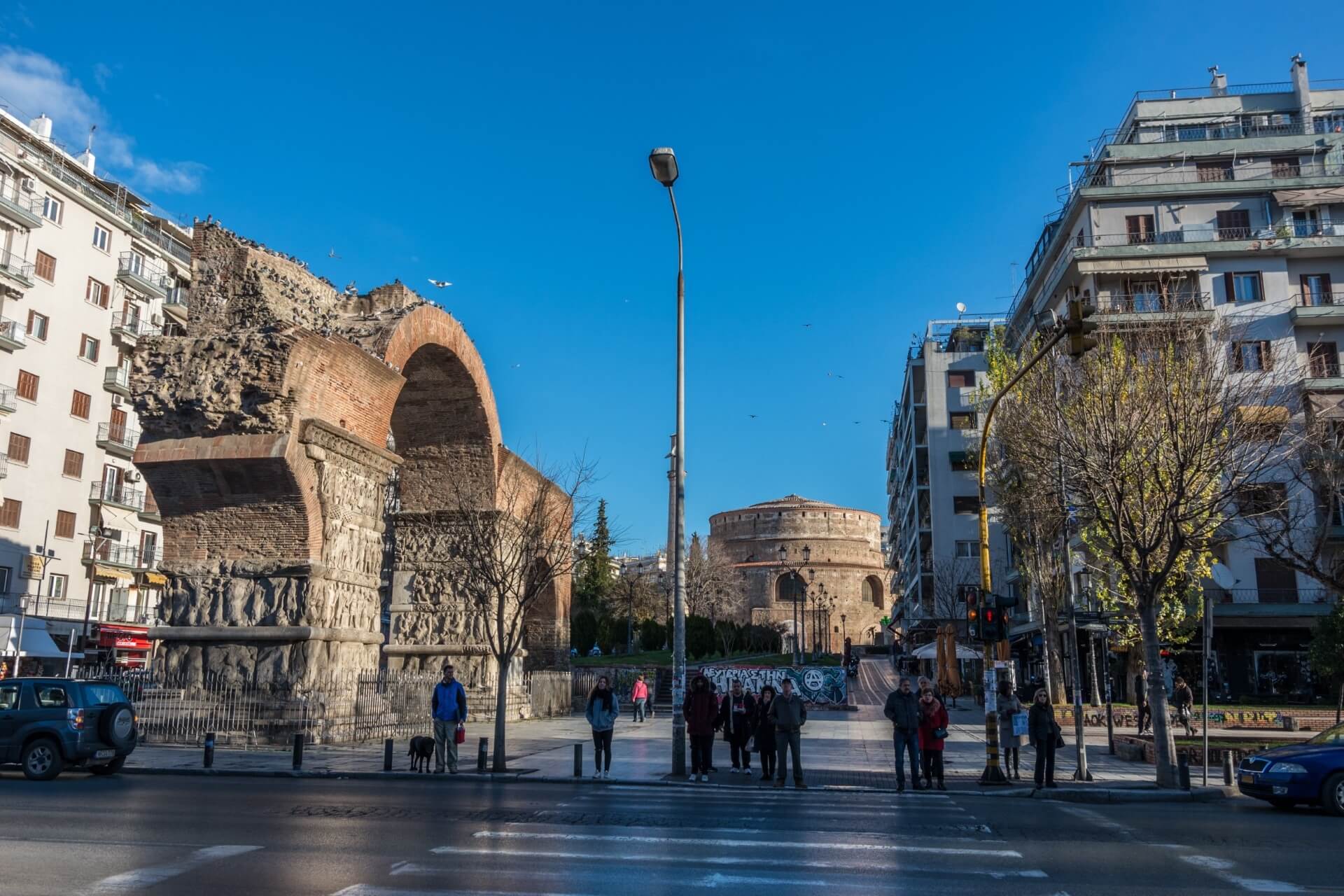
As you might have guessed, Thessaloniki has many attractions dedicated to historical and cultural figures, saints, military leaders, pioneers, and philosophers. Another such site is the Triumphal Arch of General Galerius, built to celebrate one of his most significant victories over the Sassanid Empire.
In addition to the arch, a tomb was constructed for the great general, where Galerius found his final resting place. Depending on who came to power in Thessaloniki, the purpose of the architectural complex and its structures changed. Initially, part of the buildings was used as a church, and after the Turkish conquest, the church was turned into a mosque.
The partially destroyed arch is adorned with carved rock frescoes detailing Galerius’ victorious campaign, sacrifices, gift acceptance, and the ruler’s clemency. The monument is impressive and deserves a spot in any tourist’s collection of visited places.
Monument to Alexander the Great
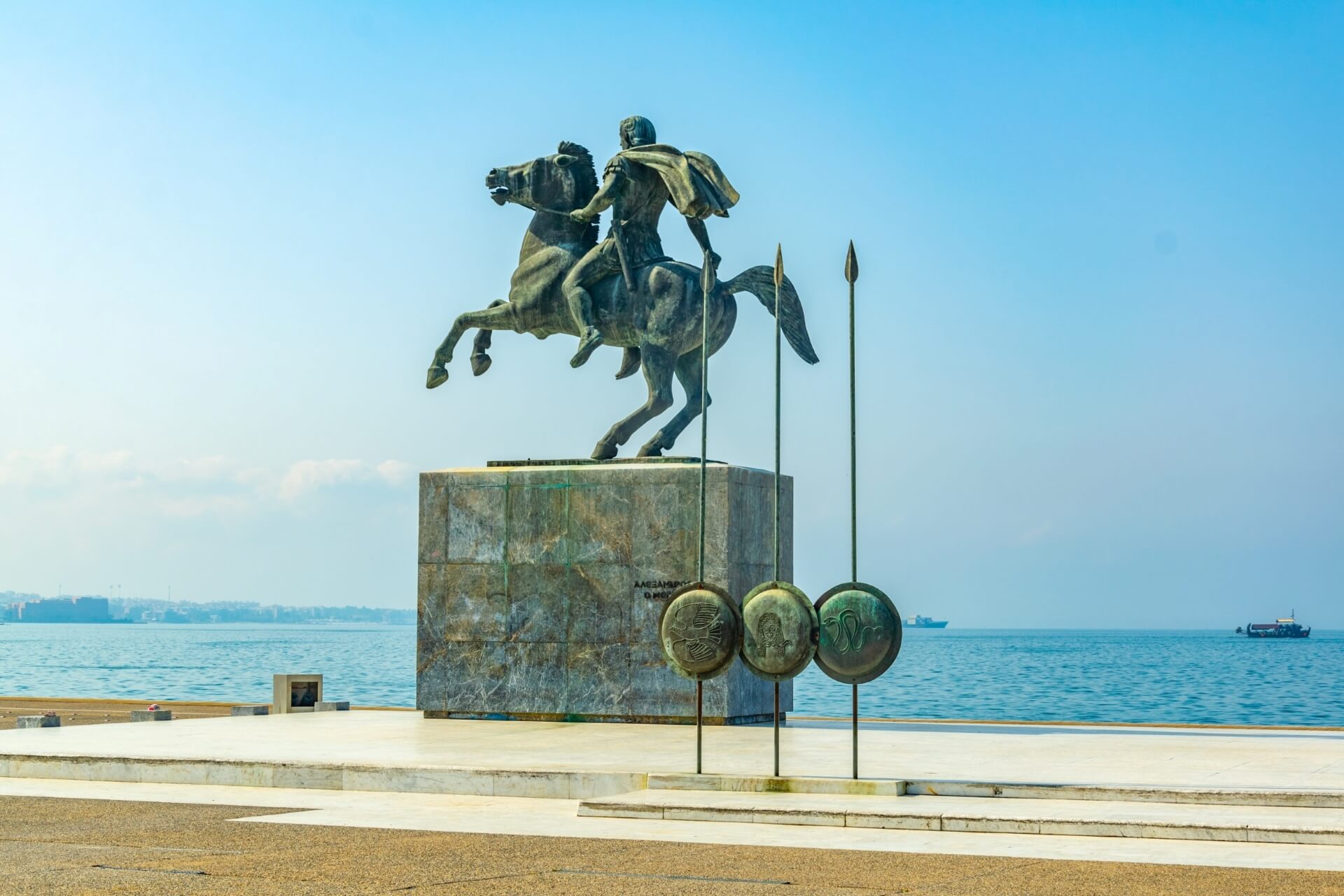
Another Thessaloniki landmark located on the city’s waterfront is dedicated to the famous Greek, Alexander the Great. The monument can be found near the White Tower. Locals have a special admiration for Alexander the Great, as his reign marked a peak in Thessaloniki’s development through his conquests and victories.
The monument is a six-meter composition depicting the general on his famous horse, Bucephalus. Behind him are several shields and spears with various images, each carrying a specific meaning. For example, a snake symbolizes wisdom, Medusa represents treachery, a lion signifies bravery, and a falcon indicates foresight. Greeks believe Alexander possessed all these virtues and gifts.
Archaeology Museum
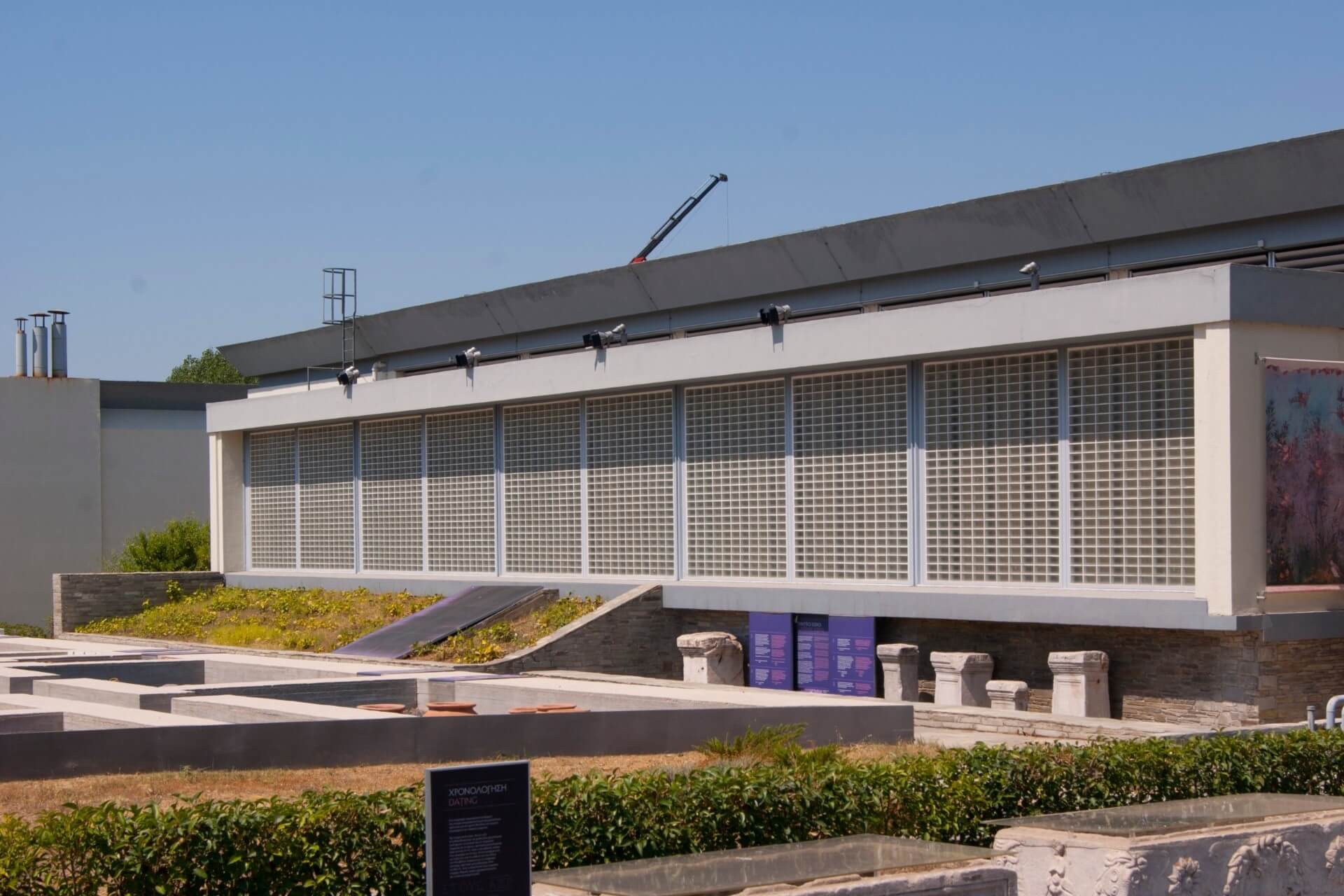
A visit to the local museum of archaeological and historical artifacts from various historical periods is a must for every tourist. The first finds from different parts of Macedonia began accumulating in the museum’s halls in 1977. The collection soon grew so extensive that it required urgent expansion.
Visitors can learn about the rich history of Thessaloniki and other Macedonian regions, and see historical artifacts of great value to archaeology. A separate collection features finds from the Roman period.
In dedicated halls, visitors can see the most significant and unusual finds from the archaic cemetery of Sindos, royal tomb artifacts, burial items, and other archaeological excavation results. There are 11 themed halls in total.
Among the most famous artifacts are a statue of Harpocrates from the 2nd century BC, a gold larnax (presumably for storing the ashes of King Philip II), gold masks, bronze helmets, medals, shields, diadems, and other treasures.
War Museum

Thessaloniki also has an interesting museum that houses many objects related to Macedonia’s military history. It first opened to the public in 2000, though the building dates back to the early 20th century. The museum’s exhibits cover various aspects of Thessaloniki’s and Greece’s military history.
The halls feature an impressive collection of military ship models, clothing samples from different military branches, distinctive insignia, and even some weaponry from neighboring countries. Separate exhibitions are dedicated to the World Wars, specific military operations, and periods of Turkish, German, and Bulgarian occupations. There is also a substantial library of historical and military publications.
Next to the building, an open-air collection of military aircraft and armored vehicles is displayed.
Museum of the Macedonian Struggle
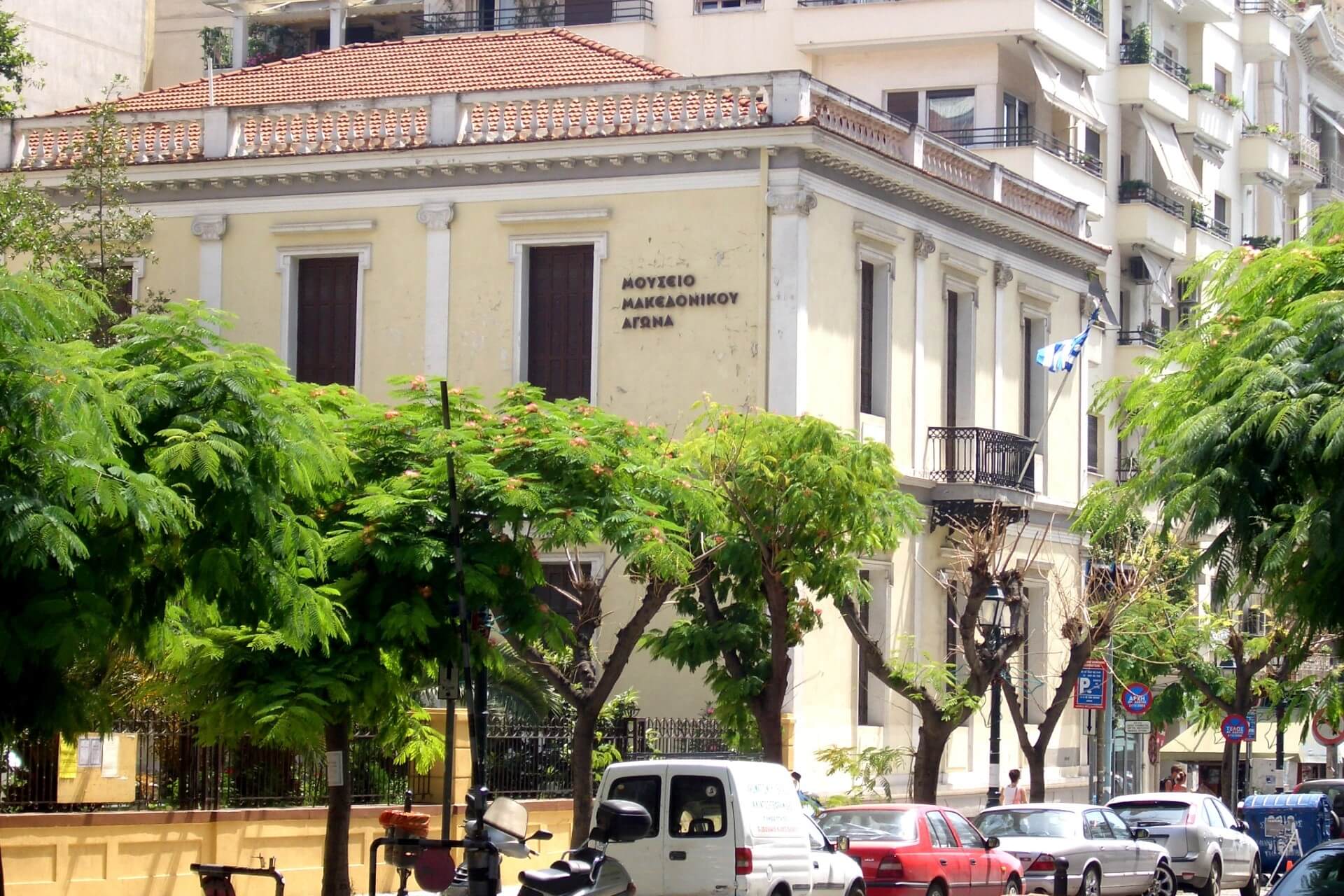
Another notable museum is the Museum of the Macedonian Struggle. Opened in 1981, it features a collection of objects illustrating both the ancient and recent history of the Greeks’ fight for independence. Besides weapons, armor, clothing, and other personal items, the museum houses rare and unique documents dating from 1770 to 1912.
The collection includes rare books, personal items of famous Greeks, and family jewels. Other interesting exhibits include national wrestling costumes, photographs, and newspapers. While the museum’s halls contain some artifacts, most of the collection is only occasionally displayed. You can reach the museum by buses 39, 3, 5, 6, 12, 33 or by taxi to Prox. Koromila str/23, 54622.
Panagia Chalkeon

We highly recommend including another significant Thessaloniki attraction in your itinerary – the cross-shaped church Panagia Chalkeon. The church was added to the World Heritage list in 1988 due to its historical and cultural value and is now very popular among tourists.
According to an inscription on the church doors, it was built by Christoforos to save his soul and those of his loved ones for their many sins. Christoforos was buried by the north wall of the building. After Greece was conquered by the Turks, the church was turned into a mosque, which explains its unusual name.
Despite its Christian purpose, the church has non-traditional elements, including an altar. The frescoes have not been well preserved but are still recognizable. The most famous ones glorify Christ and his apostles.
The attraction is located at Chalkeon 2, Thessaloniki 546 24.
As you can see, tourists visiting Thessaloniki will have plenty to do. In addition to excellent beach conditions, numerous entertainment and cultural venues, visitors can enjoy a rich and interesting excursion program.
Thessaloniki: Your Gateway to Beautiful Beaches and Coastal Resorts

